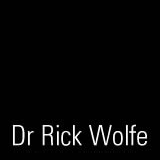1) It’s not new
SMILE is nearly a decade old now, and seems to have failed to impress most refractive surgeons, who are always looking for better ways to do surgery. Some surgeons have taken it up, but in Melbourne there was ever only one centre performing SMILE. It withdrew the procedure because SMILE underperformed for them. Surgeons who perform SMILE still do much of their work with LASIK and ASLA. This is because many patients are not suitable for SMILE. The technique needs further development.
2) SMILE is less invasive and maintains strength of the cornea
Whilst the incision in the cornea is smaller, the invasion deep in the cornea is the same as LASIK.
It has been claimed that SMILE protects the strength of the cornea, but at the time of writing there were already seven cases of a serious complication called ectasia, or a stretching of the cornea, due to surgically-induced weakening. This is certainly of concern and the subject of a call for caution in a recent editorial (1) in the prestigious Journal of Refractive Surgery.
3) SMILE cuts fewer corneal nerves
This is true, but what does it mean for the patient? Cut nerves are probably the main contributors to post-operative dry eye after both SMILE and LASIK. It is claimed that dry eye after SMILE is less frequent than with LASIK. There is some evidence that supports this. Dry eye symptoms after surgery usually only happen in the setting of preoperative dry eye. No good surgeon should ever send his or her patient to surgery, whichever procedure, knowing there is dry eye present. The claim SMILE is associated with less dry eye probably has no meaning in reality. At VISTAeyes we employ, in suitable cases, advanced topographic-guided LASIK. In recent studies(2,3) patients undergoing this procedure, on average actually had fewer dry eye symptoms after surgery than before!
4) SMILE is just as safe and accurate as LASIK
This is claimed by SMILE enthusiasts. It might well be as safe as LASIK; we need to await further large studies to be sure.
The accuracy or visual results, however, are another thing. Most comparisons have been made between SMILE and standard, non-customised LASIK, still performed in most clinics today. SMILE seems every bit as good as early LASIK with the advantage of not inducing what is called spherical aberration. But LASIK has moved on from standard LASIK. In our clinic, we employ newer procedures customised to the individual variabilities of patients’ corneas, not just their prescription (wavefront-guided and topographic-guided techniques). A recent study (4) of topographic-guided LASIK in one eye and SMILE in the other showed clearly better vision for all visual parameters favouring LASIK! The problem for SMILE is that the axial accuracy is such that it can’t participate in customised treatments, which are the future of laser refractive surgery.
5) SMILE for the nervous?
The most uncomfortable part of the SMILE and LASIK procedures is the pressure placed on the eye to hold it still while the Femtosecond laser operates. This is the part some patients struggle with. In LASIK it can be as quick as 10 seconds, but in SMILE it is much longer because far more corneal tissue is modified by the Femtosecond laser.
6) The SMILE procedure is quiet and odourless
I have heard this as a purported advantage of SMILE. There is a buzzing sound in LASIK lasting on average 4 seconds. There should be no smell.
7) SMILE is blade-free
So is modern LASIK.
8) Visual recovery – faster with LASIK than SMILE
Return of vision is longer after SMILE and can even take a month or so. In LASIK, useable vision is present within hours and most of the improvement is seen in the first day. People need to get better quickly to get back to work and back to activities.
9) No SMILE yet for long-sighted patients
SMILE cannot treat long-sightedness and is not used by many surgeons for lower levels of short-sight; the majority of eyes.
10) Play sports? SMILE may be a better choice
The main advantage SMILE might have over LASIK is that the cap might better resist eye trauma. I have never seen a LASIK flap problem from mild to moderate eye trauma; the sort you see in sport. It is true there are some cases reported of flap problems in LASIK but these cases often have other severe eye injuries. Whilst this might be advantage perceived by some potential patients, it seems a heavy price to pay.
There are problems to solve with SMILE. There needs to be improvement in how the procedure is centred over the pupil and a way to be sure the laser is applied in the correct axis of astigmatism. Small wrinkles can be created in the cap that can decrease quality of vision (5). These need to be somehow eliminated. I doubt there is a way SMILE can be made to create customised treatments as we can with LASIK. The future of SMILE is uncertain. If it survives it will be because of improvements in outcomes and extension of the procedure to all types of refractive errors. It is certainly aided by the –false in my view- belief by patients there is less invasiveness and greater safety.
Be sure, if SMILE appears clearly a better procedure than LASIK, I will be offering it.
- Randleman B Editorial: Ectasia After Corneal Refractive Surgery: Nothing to SMILE About J Refract Surg2016;32:434-435
- T-CAT-001 study. PMA P020050/S12: FDA Summary of Safety and Effectiveness Data Available at www.fda.gov Accessed 15 Jun 16
- Stulting RD, Fant BS, the T-CAT Study Group Results of topography-guided laser in situ keratomileusis custom ablation treatment with a refractive excimer laser J Cataract Refract Surg 2016; 42:11–18
- Kanellopoulos AJ, Topography-Guided LASIK Versus Small Incision Lenticule Extraction (SMILE) for Myopia and Myopic Astigmatism: A Randomized, Prospective, Contralateral Eye Study J Refract Surg. 2017;33(5):306-312
- Shetty R, Shroff R, Kaweri L, Jayadev C, Kummelil MK, Sinha Roy A. Intra-Operative Cap Repositioning in Small Incision Lenticule Extraction (SMILE) for Enhanced Visual Recovery Curr Eye Res. 2016 Apr 4:1-7


